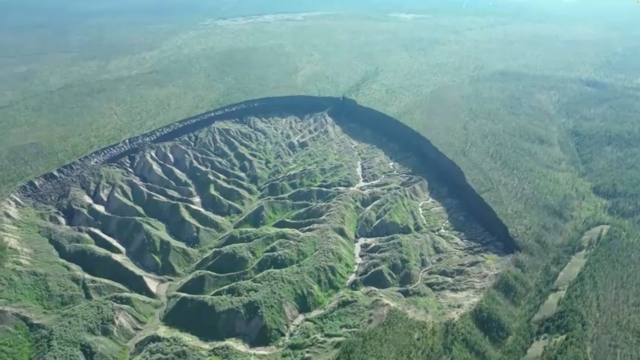Batagaika Crater
Deep within Russia’s Far East lies the Batagaika crater, an alarming testament to the consequences of global warming. As the world’s largest permafrost crater, its expansion serves as a stark reminder of the ongoing impacts of climate change.
The Batagaika Crater’s Location
The Batagaika crater is situated in Russia’s Far East, specifically in the Sakha Republic. This remote region has become a focal point for studying the effects of climate change on permafrost.
Unveiling the Main Cause of Expansion
The expansion of the Batagaika crater can be attributed to the thawing of permafrost, a phenomenon triggered by global warming. As temperatures rise, the once-frozen ground undergoes a process of degradation, leading to the formation of this colossal crater.
Understanding Permafrost
Permafrost refers to ground or soil that remains frozen at or below the freezing point (0 degrees Celsius or 32 degrees Fahrenheit) for two or more consecutive years. It is typically found in high-latitude regions near the poles, such as the Arctic and subarctic areas.
The Local Nickname: ‘The Cave-in’
Among the locals of the Sakha Republic, the Batagaika crater is affectionately referred to as ‘The cave-in.’ This name reflects the massive one-kilometre-long gash that reaches depths of up to 100 meters, created by the continuous expansion of the crater.
Impact on Russia’s Landmass
Approximately 65% of Russia’s landmass is covered by the long-frozen tundra, which has been experiencing rapid warming. The thawing permafrost in these regions is releasing greenhouse gases stored in the soil, exacerbating global warming and climate change.
Devastating Effects on Northern and Northeastern Russia
The thawing permafrost has had severe consequences on northern and northeastern Russia, leading to infrastructure damage. Buckling roadways, splitting houses, and disrupting pipelines are just a few examples of the destruction caused by the retreating permafrost.
Russia’s Rapid Warming in Comparison
Russia is experiencing warming rates that are 2.5 times higher than the global average, rendering it among the most susceptible areas to the impacts of climate change. This rapid warming has led to the acceleration of permafrost thawing and subsequent crater expansion.
The Release of Organic Carbon
As the permafrost thaws, enormous quantities of organic carbon are released into the atmosphere. This further contributes to the intensification of global warming, posing a significant challenge to climate change mitigation efforts.
Urgent Need for Action
Experts warn that the continuous growth of the Batagaika crater is a dire sign of the urgency to address climate change. Immediate action is required to mitigate its impacts and preserve the delicate balance of Earth’s ecosystems.
Month: Current Affairs - July, 2023
Category: Places in News Current Affairs


